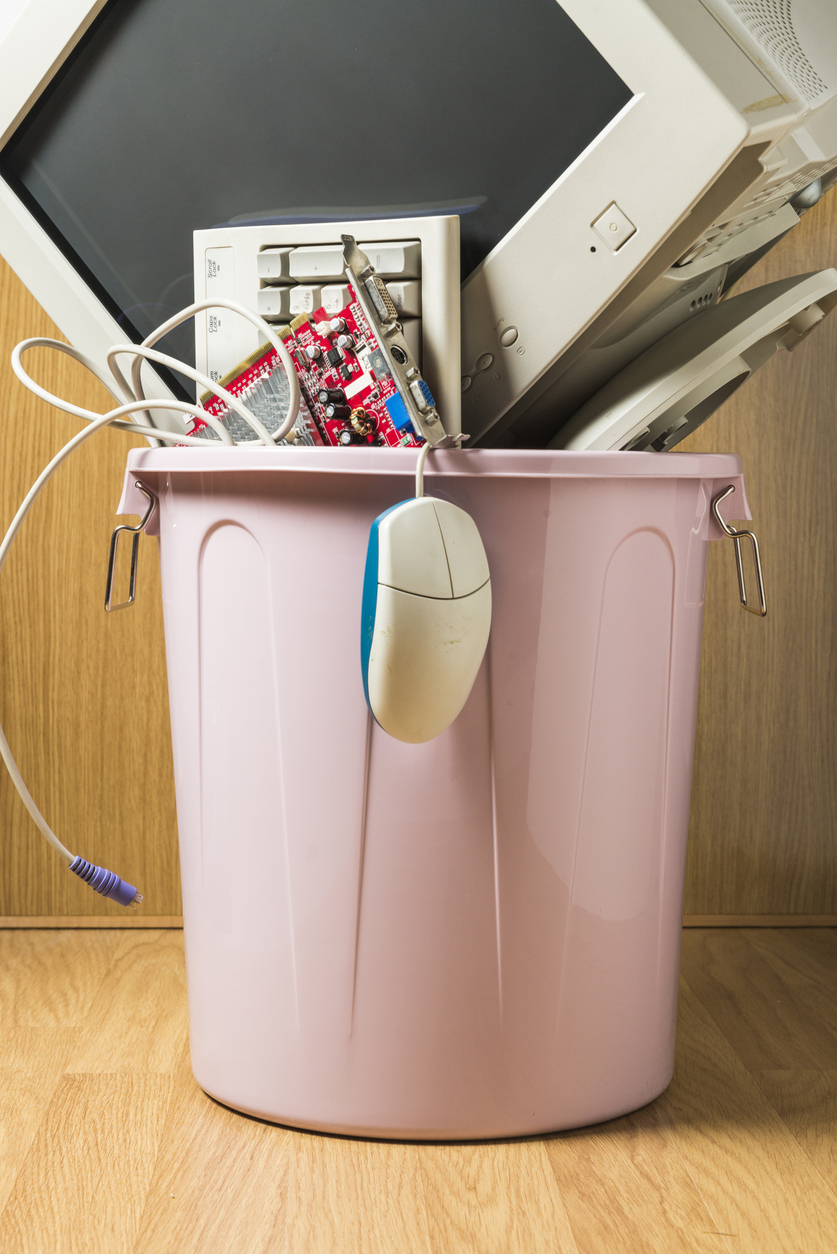
Do you wonder why people talk about letting go of stuff so much? I think if you wonder why it’s a topic of conversation, it’s probably easy for you to let go of things you no longer need or use. For others, though, the very thought of letting go may produce a whole range of emotions. People who struggle with letting things go may have hoarding behaviors or a hoarding disorder.
Although I am not a therapist and do not diagnose hoarding disorders, I know the definition and am sharing it below. The primary characteristics of a hoarding disorder include:
- Acquiring and keeping things that appear to be useless or of little value
- Failure to discard possessions
- Cluttering up the home to the point that spaces may not be used the way they were intended
When someone is exhibiting hoarding behaviors it’s counter-productive to demand that they ‘just let it go’. If you want to help someone, a friend or family member, who has too much stuff to declutter and organize their home it’s best to offer compassionate approaches.
Here are several compassionate strategies to help someone let go without forcing them.
Strategy 1: Admitting the Need to Make Room
You may be familiar with the “one in/one out” organizing rule for letting go. It says that before you bring one thing in, you need to decide which one thing you will let go of to make room for the new item.
It’s important for the person who is doing the collecting to admit that the space is limited.
Before I begin asking someone to declutter a full home, I ask them to picture a box with a lid. We talk about how many things can fit inside the box before the top doesn’t fit correctly.
Then I ask them to acknowledge that a room and even a house can hold only so much stuff before it becomes over full. When that happens there’s no room for you to do the things you want to do in that space.
If you are helping a friend declutter, the first thing to find out is how the person wants to use the space. Then everything that doesn’t support the function of the room must leave the room. That’s hard because then they face the decision of what to do with all the things they aren’t keeping in that space.
Strategy 2: Identifying Favorites
Judith Kolberg developed a fabulous strategy she calls “Friends, Acquaintances, and Strangers”. She suggests looking at a collection of things in terms of friends, acquaintances, and strangers. She defines the terms this way:
A friend is someone you invite into your home.
An acquaintance is someone you may have a conversation with on the sidewalk – in passing.
A stranger is someone you may smile at or say ‘hello’ to and keep on walking.
When you begin going through a collection of things try thinking of it in this way.
The keepers are the friends. You know that every person you meet is not a friend. Friends are special. These are things that you use or that you love looking at.
The things you sort of like or use from time to time are the things we can call acquaintances. Maybe you like where you found this thing. Consider taking a picture of it and writing down or dictating the story so you keep the memory. Then let it go.
The items we call strangers are the things that may be broken or missing a part. These are probably only difficult to part with because you’ve held onto them for so long. Once you identify them as strangers, letting go of them may be easier.
Another Decluttering Strategy
When you are helping someone declutter their home, focus on one small space at a time. Begin with something as small as a single shelf or drawer.
Instead of looking for things to remove, look for things to keep.
The more often they intentionally keep things they love and use the less clutter they will have and the better their home will function.
Try using this strategy of Friends, Acquaintances, and Strangers. Challenge them to remove things that they don’t love or use.
Here’s an important note. Celebrate every time something is recycled, donated, or tossed. This is hard work. Hard work must be rewarded. This way you can build on each success.
Strategy 3: Setting Space Goals
As I said before, the space in the home is finite. It does not expand like a balloon or yoga pants. Even they have been known to pop or split at the seam.
Look at the situation from a positive perspective.
Ask your friend or loved-one about the things they want to do in the room.
Have them visualize the way they want it to look and function, and then ask them to write down their vision. Consider putting it on a poster board and attaching it to the wall.
If they’re making space so they can work on scrapbooking or doing some other craft ask them to create a mantra like, “When I clear this table, I will be able to…”
Maybe they’re clearing the kitchen counter because they love to bake and want to bake cookies to give to friends as holiday gifts. Have them hold that happy thought in their head.
Remember letting go of the excess will allow them to use the space the way they want to.
Compassion is the Key to Success
The only thing that happens when you force someone to clear out an over-full home is that you lose their trust and it fills back up.
Understanding that the home did not become this way overnight leads to understanding that asking for a quick clean-up is counterproductive.
The thought of cleaning up the entire home is overwhelming. Plus, it probably makes the person feel even more ashamed and embarrassed that they let it get that way to begin with.
Listening with an open mind and allowing your friend to work at their pace will make the project easier for both of you.
Schedule short working times and always celebrate even the smallest step forward.
Conclusion
If you take on the task of helping a friend or loved one declutter their home by letting go of excess belongings remember you are there to help.
Remind them that slow and steady wins the race.
Show the person kindness and compassion. Tell them how proud you are that they are embarking on this journey to make their home a more functional and comfortable living space.
Sign up for my newsletter for more tips like these. If you would like more personalized advice, feel free to email me to schedule a free 30-minute phone call. You can reach me at: dnqsolutions@gmail.com
Diane N. Quintana is the owner of DNQ Solutions, LLC. She is an ADHD Organizing Specialist, a Hoarding Specialist, and a Chronic Disorganization Specialist. Diane is also an ICD Master Trainer, Certified Professional Organizer in Chronic Disorganization, Certified Professional Organizer and co-owner of Release Repurpose Reorganize LLC based in Atlanta, Georgia. She specializes in residential and home-office organizing.


You have done it again! There is nobody more vulnerable in our spheres of influence than those with hoarding disorders, and often they have found themselves coming up against people who do not (or no longer) have patience and empathy. You’ve created a rubric for anyone assisting someone in this category find their way through the difficulties.
“Have them visualize the way they want it to look and function…” is a great way to circle back when they’re tempted to hold on to things you know there’s no room for. “Does this fit your vision?” asked kindly and patiently allows the individual to find their own way to the answers and actions that will move them forward.
I read Judith’s book in the first few months after starting my business, and it was eye-opening. “Friends, Acquaintances, and Strangers” takes the good/bad issue out of the equation. It’s all just a matter of whom will you invite in to share your space. I love that you’ve shared it, and so many other empathetic practices. You rock, Diane, and you walk the talk.
Thanks for reminding me about the Friends, Acquaintances, Strangers theory. I’ve read it before, but it slipped my mind, and it’s a really good system!
Oh, Diane. I love this one. These are familiar and much-loved strategies. I appreciate how sensitively you presented and wrote about them.
I love the box analogy. It’s a great way to help someone overwhelmed by clutter understand their space differently. And, of course, Judith’s tried and true “Friends, Acquaintances, Strangers” technique is a CD classic.
All these strategies connect to leading with compassion, as you so beautifully expressed. Not everyone finds it easy to let go, declutter, and organize. Helping our clients includes being nonjudgmental, open-minded, and compassionate.
Thank you, Linda. I sometimes forget to emphasize the fact that being a non-judgmental body double is an important concept.
I love the friend acquaintance stranger strategy! i have to remember this.
I’ve also been fond of the “choose what you want to keep” approach although I’ve never used it with my clients I always think about it when I am decluttering my own space.
Thank you, Florena. I find the strategy of looking for things to keep a more positive way to approach reducing the collection.
I like the idea of talking about a box with a lid, and then expanding the idea to a house. Basically a house is a big box with a lid, so it really makes sense.
The friends, acquaintances, strangers is a great way to think about things because it gives us permission to say that an item is no longer part of our life, and like people, it can move along.
I wish my home were like yoga pants. Most of the time I need very little space. Then, around holidays or special events, I need a house that stretches to accommodate lots of people and stuff. Any creatives out there working on this?
Oh you are funny, Seana! An expanding house! But I know what you mean. Maybe that’s the answer to the Empty Nest phase. A house can shrink to accomodate the parents and then expand when children, grandchildren, and more come to visit or for a special occassion.
I’m just having a bit of fun here.
Thank you for indulging me!